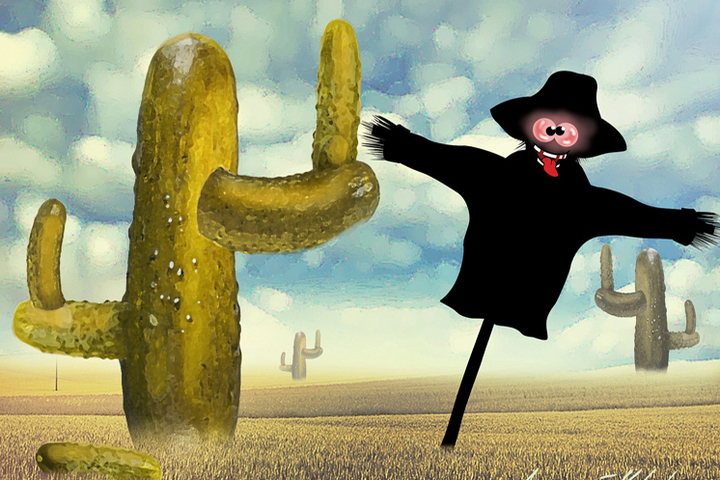The expert assessed the prospects for tequila production in Russia: 40 degrees, but there is a catch
[ad_1]

Tequila in Russia was at the peak of its popularity at the end of the 2000s: then a whole generation of young consumers was formed, accustomed to the idea that drinking vodka was supposedly rude, ungraceful and generally the lot of representatives of the social bottom. It’s tequila! It seems to be the same 40 degrees, but a completely different fresh taste. And the surroundings are good: a glossy slice of lime, a rim of salt around the edge of the glass… Alas, now the supply of tequila, like many other imported alcoholic drinks, in Russia leaves much to be desired. However, back in the fall of 2023, at one of the alcohol factories in Russia they started talking about the possibility of producing tequila – the Mexicans gave the appropriate permission.
Although Mexico has not announced a complete cessation of trade with our country, logistics have become significantly more difficult. The result is a significant reduction in the assortment on tequila shelves in Russian stores. There is no longer any need to be capricious when understanding manufacturers and prices: today consumers can expect a maximum of 1-2 bottles called “Tequila”. If you want it, take it; if you don’t want it, go on and yearn for the wonderful era.
— The “white” tequila from well-known companies, which is familiar to Russians, is being brought in, but little by little. And it’s being taken apart very quickly,” a salesman at one of the chain alcohol stores told an MK correspondent. “It’s inexpensive, and it goes for cocktails.” Therefore, it remains completely different.
On the counter there are only four bottles of the Mexican drink: three from the same manufacturer, but with different aging periods (the price ranges from 2,600 to 3,300 rubles per 0.7 liter bottle), and another for 1,600 rubles, but aged and golden.
“They brought us about ten bottles of transparent bottles, well, they were sold out within a week,” a salesman from another store confirms the words of a colleague. There are only two versions of tequila on the counter: both aged, for 2200 and for 1700 rubles. And he adds: “Few people here know how to drink tequila.”
These words may sound snobbish, but they have a basis. In Russian alcoholic folklore, the word “tequila” most often represents a very specific drink – similar to vodka, transparent (in the language of specialists it is called Silver or Joven), which is either served in shot glasses with salt and lime, or used for cocktails such as Margaritas. or Tequila Sunrise. However, in Mexico, the homeland of tequila, it is often aged in barrels – and the result is a rich drink that can easily compete with good whiskey and cognacs. Of course, this tequila is no longer used for cocktails.
It is the most inexpensive tequila that is now in short supply in Russia, but we can try to reproduce it in our realities, experts are sure.
As Ruslan Bragin, an expert on the marketing of strong alcohol and a member of the Guild of Marketers, said in an interview with an MK correspondent, today the production of tequila containing 100% blue agave is permitted only in seven states of Mexico. Mexicans protect their uniqueness – in foreign markets they can bottle tequila with less than 50% blue agave. The drink, which contains 49% agave, can be imported as bulk (distillate). This is what one of the Russian distilleries plans to do.
— You need to understand that drinking tequila in Russia is largely a bar story, rather than an everyday, home one. One can say about tequila consumers that “their circle is narrow, and they are terribly far from the people,” and they account for about 2% of the market for imported strong alcohol in Russia,” said the specialist. “However, such initiatives don’t just appear, and, apparently, there was a market request. Contrary to stereotypes, tequila is not made from cacti. Blue agave is a plant similar to a giant aloe, from which only the stalk is used. It is baked, then crushed and fermented. The fermented agave juice is distilled, and after this, tequila is born. Legally, I think, the scheme will be the same as in the production of cognac or champagne – you cannot call a drink made outside the terroir that way. Therefore, most likely, we will not see the name “tequila” in Latin on a drink released in the Russian Federation. It is not yet clear which GOST was used there, perhaps an alcoholic beverage, but this is definitely an interesting precedent on the strong alcohol market in Russia.
According to the expert, Russian companies may well reproduce the Blanco tequila segment for cocktails – but Russian tequila should certainly be cheaper than Mexican tequila. “In terms of the price range, I think this will be a good drink, although simple in taste. For those looking for more refined options—aged reposado or añejo tequila—Mexican imports will remain.”
The marketer also said that the popularity of tequila was actively promoted in the United States in the 1950s. It was there and then that the ritual “Lick! Knock it over! Take a bite!”, which tied the use of tequila to salt and lime, and at the same time its sales in the world increased significantly. However, there is also a theory that such a ritual appeared solely for the sake of disinfection – salt kills some microbes, lemon kills others, and alcohol kills others. The main thing is that the consumer liked the ritual with salt and everyone began to play this game.
[ad_2]
Source link






